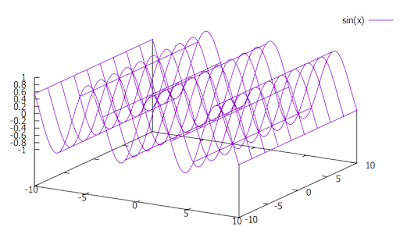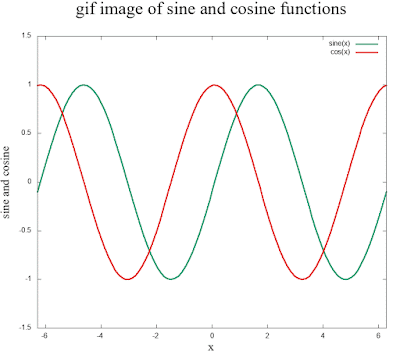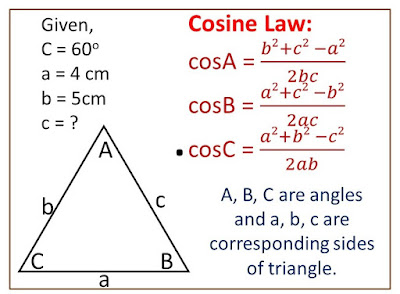How to prove compound angle formula of trigonometry | prove sin(A+B) = sinA.cosB + sinB.cosA and more formulae | Knowledge of Physics
Being straight to the point:
Suppose,
A , B and C are given angles. Then angles of the form A+B, A-B, A+B+C and A-B-C which are formed by addition or subtraction of two or more angles are called compound angles. The formula relating the compound angle with single angles is called compound angle formula.
Trigonometric Compound Angle Formulae:
- sin(A+B) = sinA cosB + sinB cosA
- sin(A-B) = sinA cosB - sinB cosA
- cos(A+B) = cosA cosB - sinA sinB
- cos(A-B) = cosA cosB + sinA sinB
- tan(A+B) = `\frac{tanA+tanB}{1-tanA tanB}`
- tan(A-B) = `\frac{tanA-tanB}{1+tanA tanB}`
- cot(A+B) = `\frac{cotA cotB -1}{cotA + cotB}`
- cot(A-B) = `\frac{cotA cotB +1}{-cotA + cotB}`
Proof of Compound angle Formulae:
1. Proving cos(A-B) = cosA cosB + sinA sinB
Fig.1 Unit circle in X-Y plane to prove cos(A-B) = cosA cosB + sinA sinB.
Consider a unit circle with its center at origin O(0,0) of X-Y co-ordinate system. Take two points P and Q on the circumference of the circle and join them to origin O, so that we have two vectors `\vec{OP}` and `\vec{OQ}`, as shown in fig.1.
`\vec{OP}` makes an angle A with OX. That is, `\angle POX = A`.
`\vec{OQ}` makes an angle B with OX. That is `\angle QOX = B`.
Therefore, the angle between `\vec{OP}` and `\vec{OQ}` is,
`\angle POQ = \angle POX - \angle QOX = A - B` -------(1)
Resolving `\vec{OP}` and `\vec{OQ}` along X and Y axis, we get
Component of `\vec{OP}` along X-axis = |`\vec{OP}`|cosA
Component of `\vec{OP}` along Y-axis = |`\vec{OP}`|sinA
Similarly,
Component of `\vec{OQ}` along X-axis = |`\vec{OQ}`|cosB
Component of `\vec{OQ}` along Y-axis = |`\vec{OQ}`|cosB
So, the coordinates of point P and Q become, P(|`\vec{OP}`|cosA, |`\vec{OP}`|sinA ) and Q(|`\vec{OQ}`|cosB, |`\vec{OQ}`|sinB ) respectively.
Since, the circle is a unit circle, its radius is equal to 1. The line OP and OQ represent radius of the circle, as shown in fig.1. This implies that the magnitude of vectors `\vec{OP}` and `\vec{OQ}` equals to 1. That is,
|`\vec{OP}`| = 1
|`\vec{OQ}`| = 1
Then two coordinates become P(cosA, sinA ) and Q(cosB, sinB ).
Now the vectors `\vec{OP}` and `\vec{OQ}` can be written as
`\vec{OP}` = x-component `\vec{i}` + y-compent `\vec{j}` = cosA `\vec{i}` + sinA `\vec{j}`
`\vec{OQ}` = x-component `\vec{i}` + y-compent `\vec{j}` = cosB `\vec{i}` + sinB `\vec{j}`
Where `\vec{i}` and `\vec{j}` are unit vectors along X and Y axis respectively.
Now the cosine or cos of the angle between two vectors `\vec{OP}` and `\vec{OQ}` is,
`cos(\angle POQ) = \frac{\vec{OP} . \vec{OQ}}{|\vec{OP}| |\vec{OQ}|}`
or, `cos(A-B) = \frac{(cos(A) \vec{i} + sin(A)\vec{j}) . (cos(B) \vec{i} + sin(B) \vec{j})}{1 \times 1}`
or, cos(A-B) = (cosA `\vec{i}` + sinA `\vec{j}`) ` . ` (cosB `\vec{i}` + sinB `\vec{j}`)
Multiplying the like terms of vectors `\vec{i}` and `\vec{j}` because `\vec{i} . \vec{i} = 1`, `\vec{j} . \vec{j} = 1` but `\vec{i} . \vec{j} = 0`, we get
cos(A-B) = cosA `\vec{i}` . cosB `\vec{i}` + sinA `\vec{j}` . sinB `\vec{j}`
or, cos(A-B) = cosA cosB (`\vec{i} . \vec{i}`) + sinA sinB (`\vec{j} . \vec{j}`)
or, cos(A-B) = cosA cosB + sinA sinB.
`\therefore` cos(A-B) = cosA cosB + sinA sinB. ------(2)
This proves the formula for cos(A-B).
2. Proving formula cos(A+B) = cosA cosB - sinA sinB.
To prove this formula, replace B from equation (2) by -B. That is,
cos(A-(-B)) = cosA cos(-B) + sinA sin(-B)
But cos(-B) = cosB and sin(-B) = sinB, so
or, cos(A+B) = cosA cosB - sinA sinB
`\therefore` cos(A+B) = cosA cosB - sinA sinB -------(3)
This proves the formula for cos(A+B).
3. Proving the formula for sin(A+B)
sin(A+B) = cos(`90^0` - (A+B))
or, sin(A+B) = cos(`(90^0` - A) - B)
Considering (`90^0` - A) as A and using (2), we have
sin(A+B) = cos(`90^0`-A) cosB + sin(`90^0`-A) sinB
or, sin(A+B) = sinA cosB + sinB cosA
`\therefore` sin(A+B) = sinA cosB + sinB cosA --------(4)
This proves the formula for sin(A+B).
4. Proving the formula for sin(A-B)
Replacing B in (4) by -B, we get
sin(A-B) = sinA cosB - sinB cosA -------(5)
Or you can also get this relation by
sin(A-B) = cos(`90^0` - (A-B)) and use the formula for cos(A+B) as we proved formula for sin(A+B). Try it yourself.
5. Proving the formula for tan(A+B)
We know,
`tan\theta = \frac{sin\theta}{cos\theta}`, So
`tan(A+B) = \frac{sin(A+B)}{cos(A+B)}`
Using the formula given by equations (3) and (4),
`tan(A+B) = \frac{sinA cosA + sinB cosA}{cosA cosB - sinA sinB}`
Dividing denominator and numerator by cosA cosB,
`tan(A+B) = \frac{\frac{sinA cosB + sinB cosA}{cosA cosB}}{\frac{cosA cosB - sinA sinB}{cosA cosB}}`
`tan(A+B) = \frac{\frac{sinA cosB}{cosA cosB} + \frac{sinB cosA}{cosA cosB}}{\frac{cosA cosB}{cosA cosB} - \frac{sinA sinB}{cosA cosB}}`
`tan(A+B) = \frac{\frac{sinA}{cosA} + \frac{sinB}{cosB}}{1 - \frac{sinA}{cosA} \frac{sinB}{cosB}}`
`tan(A+B) = \frac{tanA + tanB}{1 - tanA tanB}`
`therefore` `tan(A+B) = \frac{tanA + tanB}{1 - tanA tanB}` -----(6).
This proves formula for tan(A+B).
6. Proving the formula for tan(A-B)
Replacing B in (6) by -B, we get
`tan(A-B) = \frac{tanA - tanB}{1 + tanA tanB}`
Or, you can also prove it by using formula given by equations (2) and (5). Try it yourself. Follow the steps as we used for proving the formula for tan(A+B).
`therefore` `tan(A-B) = \frac{tanA-tanB}{1 + tanA tanB}` ------(7)
This proves the formula for tan(A-B).
7. Proving the formula for cot(A+B)
We know,
`cot\theta = \frac{cos\theta}{sin\theta}`, so
`cot(A+B) = \frac{cos(A+B)}{sin(A+B)}`
Using the formula given by equations (3) and (4), we have
`cot(A+B) = \frac{cosA cosB - sinA sinB}{sinA cosB + sinB cosA}`
Dividing denominator and numerator by sinA sinB, we get
`cot(A+B) = \frac{\frac{cosA cosB - sinA sinB}{sinA sinB}}{\frac{sinA cosB + sinB cosA}{sinA sinB}}`
`cot(A+B) = \frac{\frac{cosA cosB}{sinA sinB} - \frac{sinA sinB}{sinA sinB}}{\frac{sinA cosB}{sinA sinB} + \frac{sinB cosA}{sinA sinB}}`
`cot(A+B) = \frac{\frac{cosA}{sinA} \frac{cosB}{sinB} -1}{\frac{cosB}{sinB} + \frac{cosA}{sinA}}`
`cot(A+B) = \frac{cotA cotB -1 }{cotB + cotA}`
`therefore` `cot(A+B) = \frac{cotB cotA - 1}{cotB + cotA}` -------(8)
This proves the formula for cot(A+B).
8. Proving the formula for cot(A-B)
To get formula for cot(A-B), replace B in equation by -B, then
`cot(A-B) = \frac{cot(-B) cotA - 1}{cot(-B) + cotA}`
or, `cot(A-B) = \frac{-cotB cotA -1}{-cotB + cotA}`
or, `cot(A-B) = \frac{- (cotB cotA + 1)}{- (cotB - cotA)}`
`\therefore` `cot(A-B) = \frac{cotB cotA + 1}{cotB - cotA}` ----(9)
This proves the formula for cot(A-B).
You can also prove formula given by equation (9) by using equations (2) and (5), by following the steps as we did for proving the formula for cot(A+B).
Some rules of Angle conversion:
- sin(-`\theta`) = - sin`\theta`
- cos(-`\theta`) = cos`\theta`
- tan(-`\theta`) = `\frac{sin(-\theta)}{cos(-\theta)} = \frac{-sin\theta}{cos\theta} = -tan\theta`
- cot(-`\theta`) = `\frac{cos(-\theta)}{sin(-\theta)} = \frac{cos\theta}{-sin\theta} = -cot\theta`
- `sec(-\theta) = \frac{1}{cos(-\theta)} = \frac{1}{cos\theta} = sec\theta`
- cosec(-`\theta`) = `\frac{1}{sin(-\theta)} = \frac{1}{-sin\theta}` = -cosec`\theta`.
For Example:
1. Find the value of sin(-`15^0`).
Here,
sin(-`15^0`)
= sin(`30^0 - 45^0`)
= `sin30^0 cos45^0 - sin45^0 cos30^0` ----(i)
We have, `sin30^0 = \frac{1}{2}`and `cos30^0 = \frac{\sqrt{3}}{2}` and `sin45^0 = cos45^0 = \frac{1}{\sqrt{2}}`.
Using these values,
`sin(-15^0) = \frac{1}{2} \frac{1}{\sqrt{2}} - \frac{1}{\sqrt{2}} \frac{\sqrt{3}}{2}`
`sin(-15^0) = \frac{1 - \sqrt{3}}{2 \sqrt{2}}`
As `\sqrt{3} > 1`,
`sin(-15^0) = - \frac{\sqrt{3} - 1}{2 \sqrt{2}}`
`\therefore` `sin(-15^0) = - \frac{\sqrt{3} - 1}{2 \sqrt{2}}`.
This gives the rquired value.
Also from (i),
`sin(-15^0) = sin30^0 cos45^0 - sin45^0 cos30^0`
or, `sin(-15^0) = -( sin45^0 cos30^0 - sin30^0 cos45^0)`
or, `sin(-15^0) = - sin(45^0 - 30^0)`
or, `sin(-15^0) = -sin15^0`
`\therefore` `sin(-15^0) = -sin15^0`.//
2. If `A+B+C = \pi`, then prove that
a.) tanA + tanB + tanC = tanA tanB tanC
b.) cot`\frac{A}{2}` + cot`\frac{B}{2}` + cot`\frac{C}{2}` = cot`\frac{A}{2}` cot`\frac{B}{2}` cot`\frac{C}{2}`
c.) cotA cotB + cotB cotC + cotC cotA = 1
Solution:
Given,
A + B + C =`\pi`
`\rightarrow` A+B = `\pi` - C ------(i)
a.) To prove part (a), take tan on both sides of (i),
tan(A+B) = tan(`\pi` - C)
or, `\frac{tanA + tanB}{1 - tanA tanB} = -tanC`
or, tanA + tanB = -tanC (1 - tanA tanB)
or, tanA + tanB = -tanC + tanA tanB tanC
or, tanA + tanB + tanC = tanA tanB tanC
`therefore` tanA + tanB + tanC = tanA tanB tanC.
This proves the first part.
b.) To prove second part, divide both of (i) by 2,
`A + B = \pi - C`
`\rightarrow``\frac{A+B}{2} = \frac{\pi - C}{2}`
Taking cot on both sides, we get
`cot(\frac{A+B}{2}) = cot(\frac{\pi - C}{2})`
or, `cot(\frac{A}{2} + \frac{B}{2}) = cot(\frac{\pi}{2} - \frac{C}{2})`
or, `\frac{cot\frac{A}{2} cot \frac{B}{2} - 1}{cot\frac{B}{2} + cot\frac{A}{2}} = tan\frac{C}{2}`
or, `cot\frac{A}{2} cot\frac{B}{2} -1 = tan\frac{C}{2} (cot\frac{B}{2} + cot\frac{A}{2})`
or, `cot\frac{A}{2} cot\frac{B}{2} -1 = frac{1}{cot\frac{C}{2}} (cot\frac{B}{2} + cot\frac{A}{2})`
or, `cot\frac{C}{2}(cot\frac{A}{2} cot\frac{B}{2} -1) = (cot\frac{B}{2} + cot\frac{A}{2})`
or, `cot\frac{A}{2} cot\frac{B}{2} cot\frac{C}{2} - cot\frac{C}{2}= cot\frac{B}{2} + cot\frac{A}{2}`
or, `cot\frac{A}{2} + cot\frac{B}{2} + cot\frac{C}{2} = cot\frac{B}{2} cot\frac{A}{2} cot\frac{C}{2}`
`therefore` `cot\frac{A}{2} + cot\frac{B}{2} + cot\frac{C}{2} = cot\frac{A}{2}.cot\frac{B}{2}.cot\frac{C}{2}`.
This proves the second part.
c.) To prove third part, take cot on both sides of (i),
cot(A+B) = cot(`\pi` - C)
or, `\frac{cotA cotB - 1}{cotB + cotA} = - cotC`
or, cotA cotB -1 = - cotC (cotB + cotA)
or, cotA cotB - 1 = - cotB cotC - cotC cotA
or, cotA cotB + cotB cotC + cotC cotA = 1
`\therefore` cotA cotB + cotB cotC + cotC cotA = 1.
This proves the third part.
3.) Prove that: `sin(A-45^0) = \frac{1}{\sqrt{2}}(sinA - cosA)`
Solution:
Taking Left Hand Side,
`sin(A - 45^0)`
= `sinA cos45^0 - sin45^0 cosA`
But `sin45^0 = cos45^0 = \frac{1}{\sqrt{2}}`, so
= `sinA \frac{1}{\sqrt{2}} - \frac{1}{\sqrt{2}} cosA`
= `\frac{1}{\sqrt{2}}(sinA - cosA)`, which the right hand side.
`\therefore` `sin(A-45^0) = \frac{1}{\sqrt{2}}(sinA - cosA)`. Hence proved.
Follow this site for more updates.









Comments
Post a Comment